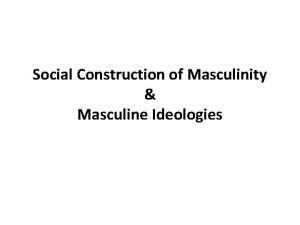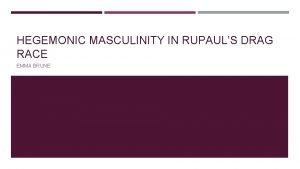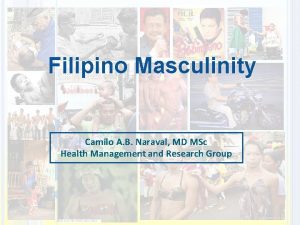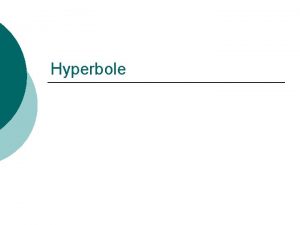Tigers Coyotes and Cats Precariousness and Masculinity among

















- Slides: 17

Tigers, Coyotes and Cats: Precariousness and Masculinity among Mexican Migrant Workers in Canada Tanya Basok, Danièle Bélanger, and Eloy Rivas

Two trends in migration governance �Restrictive Immigration Policies �Temporary migration

Neoliberalism and temporary migration �Race to the bottom – cheap, flexible and unprotected labour �Responsibilization of migrants to contribute to economic prosperity in home countries

Neoliberalism and Migration Control �Liberalization of border for trade and investment �The need to re-assert sovereignty �The moral ethic of neoliberilism (migrants = uncitizens = antiprudent, dependent and unethical)

Temporary workers and precariousness �restricted mobility in the labour force � dependent on employers, �Denied permanent settlement � separated from family members, �restricted access to social benefits �Exploitative and insecurity labour conditions

Unauthorized migrants and precariousness �Denied access to social protections and services �Subject to authoritarian practices by immigration authorities �Exploitative and insecurity labour conditions

Precariousness - defined �Goldring, Berinstein, & Bernhard (2009) define precariousness by: the absence of work authorization, the right to remain permanently in the country, freedom of movement in the labour market, independence, or access to social citizenship, such as education or health coverage.

Current research on precariousness �Precariousness as constructed by specific state policies, regulations, and practices of policy implementation �Transition from one precarious status to another �Daily experiences of precariousness �Impact on physical and mental health

Our contributions �interaction between different categories of migrants in precarious conditions and the impact of the recently increased presence of diverse groups of precarious migrants on precarious migrants of the earlier waves. � subjective perceptions of increasing vulnerability. �cultural responses to precariousness.

SAWP and other agricultural workers � 1966 – Jamaican program � 1974 – Mexican program � 20, 000 workers annually � 2002: Low Skilled Workers Pilot Project (LSWPP), � 10, 000 LSPWW workers annually � Unauthorized migrants � Leamington (South-Western Ontario): 3, 0004, 000 migrant workers

Our study �Summer, 2010 �Interviewed 30 workers �Three themes ◦ increased pressure ◦ competition ◦ strong drive to outperform other workers

Fear of replacement � Fear of being replaced by Guatemalan, Thai, or Caribbean workers � No perceived threat from unauthorized workers � Manufactured threat of replacement � Response: construct themselves as the most experienced, toughest, fastest and best workers of the region.

Tigers, coyotes and cats: The spiral of competition and hierarchization amongst workers Tigers (Young, fastest, strongestmainly undocumented-) Coyotes (Fast, strong, experienced) Cats (Young inexperienced/oldest/docile/not strong/not agile)

Masculinity and gender values among Mexican peasants 1) Will and capacity to work hard (Echarle ganas), 2) Physical and mental strength (Ser fuerte), 3) Responsibility to protect their own family (Ser responsable), 4) Solidarity and empathy for the ‘weak’ (Ser bueno y protector), 5) Communitarian leadership (Ser el más chingón), 6) Self-Government (Ser independiente), 7) Stoicism (No rajarse and No quejarse). Hegemonic Model of gender socialization in rural Mexico -mainly embedded in subsistence economies based on organic and mechanic solidarity (as theorized by Emile Durkheim)

Labour insecurity and the reconfiguration of masculinity � � � In the context of labour flexibilization, which demands speed, discipline, instrumental abilities, and physical resistance, the Mexican migrant workers have realized that some of their “masculine qualities” are particularly useful, while others must be hidden. The gender qualities they have reinforced: 1) Labour discipline, 2) Physical and mental strength, 3) Stoicism, and 4) Responsibility to protect the family. The gender qualities that have been deliberately subjugated are: 1) solidarity and goodness.

Outcomes: 1) The deterioration of physical and mental health In the interviews, the workers (whether they are tigers, coyotes, or cats) spoke about: Mental health issues: � 1) Stress, anxiety, depression and uncertainty are experienced when realizing that they will find difficulties in maintaining their jobs for a long period of time. Physical health-related issues: � Permanent back pain � Hand shoulder pain � Repetitive strain injuries generated by the intensification of the work process and the spiral of competition amongst them.

Outcomes: 2) The impossibility of workers’ collective resistance Consequences generated by the subjugation of solidarity and empathy: � The workers do not speak amongst themselves about the mental and physical problems they face � Nor do they offer moral and material support to the ones who need it; � They fight sometimes amongst themselves. � Increasing acts of boycott against co-workers Final result: Difficult to organize, demand create better working conditions
 Dylans mother buys him a sailors cap
Dylans mother buys him a sailors cap Coyotes in maryland
Coyotes in maryland Masculinity romeo and juliet
Masculinity romeo and juliet Masculinity ideology
Masculinity ideology Ikemefuna personality
Ikemefuna personality Trifle
Trifle Hegemonic masculinity definition
Hegemonic masculinity definition Masculinity in othello
Masculinity in othello Filipino masculinity traits
Filipino masculinity traits Venezuela
Venezuela Hegemonic masculinity definition
Hegemonic masculinity definition Ethnic identity examples
Ethnic identity examples Her brain is the size of a pea figure of speech
Her brain is the size of a pea figure of speech As i was saying by augustus gluten
As i was saying by augustus gluten Cats of borneo order of events
Cats of borneo order of events The day they parachuted cats into borneo
The day they parachuted cats into borneo Indication of injection
Indication of injection Raining cats and dogs figure of speech
Raining cats and dogs figure of speech
































